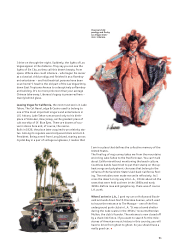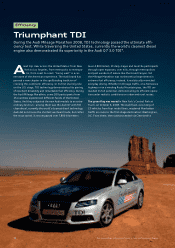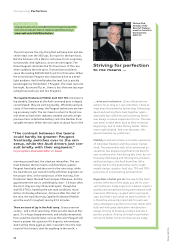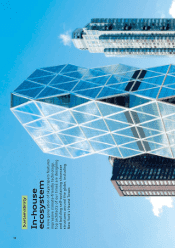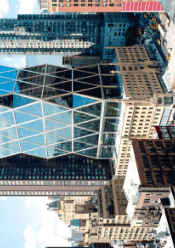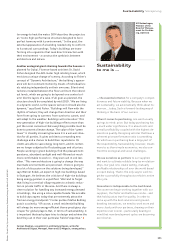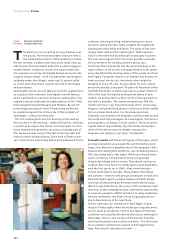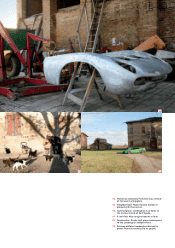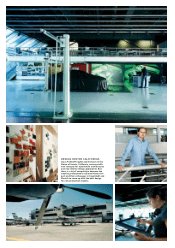Audi 2008 Annual Report Download - page 103
Download and view the complete annual report
Please find page 103 of the 2008 Audi annual report below. You can navigate through the pages in the report by either clicking on the pages listed below, or by using the keyword search tool below to find specific information within the annual report.
100
rom far away, the building looks like an upscale,
futuristic beehive: a honeycomb grid applied to the
facade and illuminated in dark blue. With New
York’s Hearst Tower, architect Sir Norman Foster has suc-
ceeded in creating an especially stylish icon, winning him
the 2008 International Highrise Award among others for
the 182-meter tower. But that’s not actually the subject of
this story. Contrary to the norm, how a skyscraper looks
plays only a supporting role here.
First, a few facts. 85 percent of Hearst Tower is made out of
recycled steel. It uses 26 percent less energy than compa-
rable skyscrapers, saving 1,070 metric tons of carbon di-
oxide a year. Water for the “icefall” in the lobby is provided
by rainwater collected on the roof, as is the case for the air
conditioning system and water for the plants. Hearst Tower
is the prototype of a new movement in which skyscrapers
no longer garner attention for their record heights and
symbolic external appearance, but strictly for their sophisti-
cated, in-house ecosystem instead.
There was a time when sustainability was no more than a
trendy label applied to buildings. The words “solar” and
“green” only seemed to spring forth from the mouths of
ambitious architects. It was all about shiny packaging: Its
actual content was hardly noticed nor was it taken seriously
enough. But architecture is currently making great strides
in giving this subject the emphasis it deserves. Sustainabil-
ity has gained intrinsic value among major builders, and is
a trademark of anyone who wants to take our future and its
challenges seriously. Skyscrapers are ideally suited to con-
veying this conviction. Not only have they always served as
prestigious landmarks in sprawling metropolises, embody-
ing a feeling of status and importance, they also demon-
strate the further advances in technology. Walking down
New York’s 57th Street today and seeing Hearst Tower
shimmer through the forest of skyscrapers, you marvel not
only at the elegance of the monolith, but also at the eco-
logical significance that has made it famous. “Hearst Tower
is a kind of role model,” says Professor Stefan Behling,
senior partner at the offices of Sir Norman Foster. “Sus-
tainability has become a very important goal and one that
everyone is going to have to comply with. In the future,
no one is going to be able to afford continuing to ignore
sustainability.”
Architecture is already preparing to take the next step for-
ward. Future towers will not only surround us with light
and heat within their own four walls; to some extent, they
will also share this energy with others. Regenerative energy
recovery usually produces more energy than the building
actually needs. The giant wind turbines and photovoltaic
facades used to produce the energy turn skyscrapers into
power plants. One innovative example of this revolutionary
approach is the planned 309-meter high Pearl River Tower
designed by Skidmore, Owings & Merrill (SOM) to be built
in Guangzhou, China, almost 200 kilometers from Hong
Kong. The environmentally friendly giant will tap energy
from wind and sun, and produce surplus energy. As the
building leans into the wind like a gigantic sail, the shape
of the facade guides the airflow into the tower’s two
cavities, activating turbines that generate electricity. In-
house energy consumption will also be greatly reduced by
using as much natural light as possible, rainwater and so-
01 ROTATING TOWER
With levels that rotate on their
own axes – powered by wind
turbines – this green giant is
scheduled to begin twisting into
the skies above Dubai in 2010.
02 PEARL RIVER TOWER
The new landmark in the Chinese
city of Guangzhou actually func-
tions as a power plant. The shape
of the facade guides the airflow
into two integrated wind turbines
to generate electricity.
F
Copy Carmen Stephan
01 02



